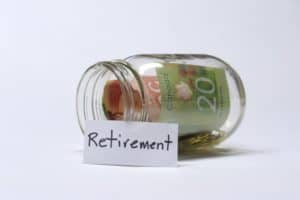
Planning out retirement can be daunting, regardless of your age. But one of the most common retirement savings options in Canada, the Registered Retirement Savings Plan (RRSP), isn’t as popular as it used to be, according to a recent poll by CIBC.
CIBC’s Managing Director of Tax & Estate Planning Jamie Golombek says fewer Canadians are contributing to those plans, and more people are withdrawing from them early. In his most recent note to investors, Golombek highlights some of the myths that have manifested around the RRSP, and explains why those misconceptions can actually be a huge hinderance to long-term savings goals.
Myth 1: TFSAs are a better retirement investing vehicle than RRSPs.
You put your money in, you take your money out, and the tax man doesn’t touch a cent. Pretty great, right? That’s certainly what many Canadians think — 67 per cent of those surveyed said a Tax-Free Savings Account (TFSA) is a better way to save because all contributions are tax free forever. With an RRSP, you’re paying taxes on the money when you withdraw it during retirement.
While the TFSA may be a good choice for some people, it certainly shouldn’t be the default for all Canadians to save for retirement.
“Although a TFSA may be a better choice for those currently in a lower tax bracket or early in their income-earning years, an RRSP can provide a completely tax-free rate of return and is frequently the best option for retirement savings,” says Golombek.
Those who are in a lower tax bracket or people who are early in their income-earning years can make more strategic use of TFSAs as retirement vehicles, but everyone else should be using an RRSP. TFSAs also have an annual limit on how much you can contribute, which varies from year to year. This tax year’s contribution limit is $5,500, and the limit is cumulative for all past years, so if you’ve never put money in a TFSA, you can contribute up to $57,500 for the 2017 tax year.
Myth 2: RRSPs are pointless, because you have to pay tax when you withdraw it.
In the CIBC poll, 39 per cent of people surveyed said it was pointless to have an RRSP, as they’ll have to pay the tax on that income later on, anyway.
Golombek points out in his report that there are actually plenty of tax-related reasons to contribute to an RRSP: 1) you get a tax deduction the year you contribute to your RRSP, 2) if the tax rate is lower the year you take out the money, you’ll actually get a better after-tax rate of return, and 3) when you grow your income inside a registered vehicle like a RRSP, you won’t pay capital gains tax.
“The bottom line is that there’s no point having non-registered investments unless you have maxed out your TFSA or RRSP room,” says Golombek.
Myth 3: Other sources will fund retirement, so an RRSP isn’t needed.
49 per cent of Canadians who responded in the poll don’t cite an RRSP as one of their main sources of income for retirement. Primary sources of income are expected to be government pensions/benefits (57 per cent), employer-sponsored pensions (34 per cent), TFSAs (32 per cent), equity in the primary residence (19 per cent), non-registered investments (18 per cent), inheritance (11 per cent), real estate investments (8 per cent), rental property income (7 per cent), and lottery winnings (4 per cent).
In 2018, the maximum monthly payment amount for a government pension plan was $1,134.17, or $13,610.04 annually. These benefits are only available after you turn 65, so if you plan on spending more than that amount every month in retirement, a supplementary income, like funds from an RRSP, may be necessary.
“Moreover,” says Golombek, “57% of respondents said they wished they knew what retirement savings strategy was best for them. Yet among those who were currently not retired or only semi-retired, only 10% had a formal and detailed plan that describes the lifestyle they want in retirement, the income they will need, and take measures to save regularly to achieve their goals.”
Only 60 per cent of Canadians have an RRSP, and that number drops the younger the demographic; only 49 per cent of 18-to-34-year-olds have an RRSP. Even fewer Canadians (and especially Millennials) plan on contributing to their RRSP this tax year (42 per cent and 40 per cent respectively).
Golombek recommends consulting with a financial professional to plan out the best course of action for funding retirement goals.


